#アイヌ文化
Explore tagged Tumblr posts
Text

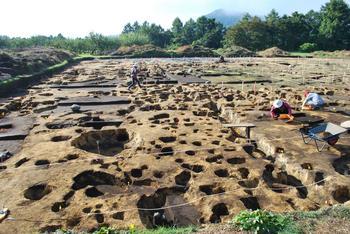
El clan Nanbu tenía un fuerte. ¿Qué es un daimyō? La gama que los samuráis ganaron más poder son los señores feudales, el sitio histórico de shojujitate fue la residencia del clan Nanbu, construido en la orilla norte del río mabuchi en la prefectura de Aomori. Estaban ubicados en el punto estratégico de comunicación. - Sin embargo, el castillo estaba cerca de los caminos oshu kaido y kazunokaido, el lugar estaba limitado por montañas al este-oeste y norte-sur, los 300 a 250 m la dimensión del fuerte era de aproximadamente 90.000 metros cuadrados. Como resultado de la excavación que el arqueólogo llevó a cabo hasta el edificio de pilares del escape más grande de la región de tohoku, se extiende 18 tramos de 36 m de norte a sur de 42 m, la estructura ha sido de dos pisos de altura y los pilares de la puerta de 45 cm la fecha del castillo de 1539 en la era de Teherán. - Cerámica de alta calidad y artefactos culturales honshu Ainu, se han recuperado más de 4000 tipos de cerámica vidriada medieval dentro del sitio, de los cuales siete décimos son guerras vidriadas chinas. - En resumen, la forma en que se puede discernir a partir de los elementos recuperados en los restos de shojujitate datan de la cultura del período Murumachi y Sengoku en Japón. - - En resumen, la forma en que se puede discernir a partir de los elementos recuperados en los restos de shojujitate datan de la cultura del período Murumachi y Sengoku en Japón. - 南部氏には砦がありました。大名とは?武士が勢力を拡大した範囲は領主領であり、青森県の馬渕川北岸に建てられた南部藩の居城であった正寿寺立史跡は交通の要所に位置していました。 しかし、城は奥州街道や鹿角街道に近く、東西南北は山に囲まれた場所でした。 300 から 250 m の砦の寸法は約 90,000 平方メートルでした。 18スパン36m南北42mに及ぶ東北地方最大級の脱獄の柱建造物を考古学者が発掘調査した結果、2階建てで門柱45cmの城郭時代の1539年テヘラン時代。 高品質の陶磁器と本州アイヌの文化的遺物、4000 種類以上の中世の釉薬を使った陶磁器が遺跡内から回収されており、そのうち 10 分の 7 が中国の釉薬を使った陶器です。 手短に言えば、正寿寺立遺跡の出土品から、室町時代と戦国時代の文化が日本に伝わる様子がわかる。 - The Nanbu clan had a fort. What is a daimyo? The range that the samurais won more power are the sir feudal, the shojujitate historic site was the residence of the Nanbu clan, built in the north bank of the mabuchi river in the Aomori prefecture were located in the strategic point of communication. However the castle was near the oshu kaido and Kazunokaido roads, the place was limited by mountains to the east-west and north - south; the 300 to 250 m the dimension of the fort was approximately 90.000 square meters. As a result of excavation the archaeologist conducted to the pillar building of the largest escape of the tohoku region extending 18 spans 36 m north-south spans 42 m, the structure has been two stories tall and gate pillars 45 cm the castle date of 1539 in the Tehran era. High quality ceramics and honshu Ainu cultural artifacts, more than 4000 types of medieval glazed ceramics have been recovered from within the site of which seven tenth are Chinese glazed warres. In short the manner it can be discerned from the items recovered at the shojujitate remains date Murumachi and Sengoku period culture to Japan. ソース写真/source photo: https://www.town.aomori-nanbu.lg.jp/page/1543.html
#正十次立史跡#南部町#青森県#アイヌ文化#アイヌ#日本#日本の歴史#日本の考古学#考古学的遺跡#世界遺産#向かい合う鶴のモチーフ#戦国時代#大名#馬淵川#鹿角街道#ShojujiritsuHistoricSite#NanbuTown#AomoriPrefecture#AinuCulture#Ainu#Japan#JapaneseHistory#JapaneseArcheology#ArchaeologicalRuins#WorldHeritage#FacingCraneMotif#SengokuPeriod#Daimyo#Mabechigawa#Kazunohighway
63 notes
·
View notes
Photo
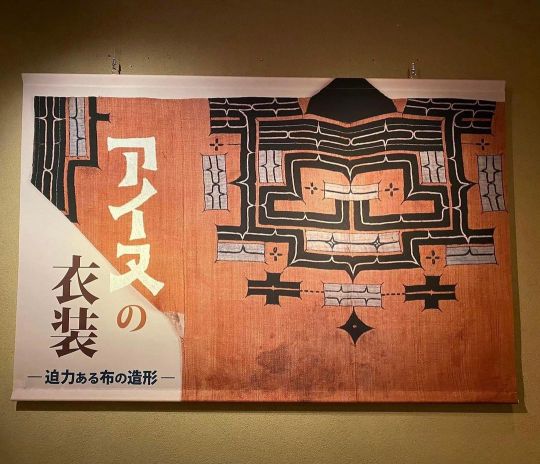
#アイヌ #アイヌ紋様 #アイヌ刺繍 #アイヌ木彫 #アイヌ文化 が好きで憧れています☺️ なので、昨年の秋には1人で阿寒湖に泊まりました✨ 白老にも行きたいと思っています♪ なんと #静岡市 にある #芹沢銈介美術館 で アイヌ文化の講習会があったので 電話予約して行って来ました🚗 なかなか聴けない貴重なお話しばかりで、とても興味深かったです♪ 二風谷にも行きたくなったし、 「ゴールデンカムイ」の続きを読みたくなりました。 二風谷で撮影中の映画も楽しみです🎬 #芹沢銈介美術館 は、また改めてゆっくり訪れたいです♪ #ainu #民族 #民藝 #民芸 #伝統文化 (芹沢銈介美術館) https://www.instagram.com/p/CpTh-MkyBiy/?igshid=NGJjMDIxMWI=
3 notes
·
View notes
Text
youtube
【1時間500円の学習塾イマジン】 公民の基本的人権についての 解説動画の3つ目です。
バリアフリー、部落差別、同和対策審議会、アイヌ文化振興法などについて 解説しています。 AIアプリ Study monster との連携で学習効果を発揮します。
動画の最後に LINE、AIアプリ、塾HPのQRコードが出るので 入塾やアプリ利用についてはそちらからご連絡ください
HPはこちらです https://snowflakes4405.wixsite.com/imagine
高校受験 #中学受験 #中3 #公民 #勉強 #期末テスト #studywithme #学び直し #勉強嫌い #勉強垢 #中学生 #不登校

0 notes
Text
シベリアの木製口琴と金属製口琴 北方民族博物館の館内映像(撮影可)
ケット/西シベリア Ket/ Western Siberia 木製口琴 Wooden jew's harp
サハ/東シベリア Sakha/Eastern Siberia 金属製口琴 Metal jew's harp

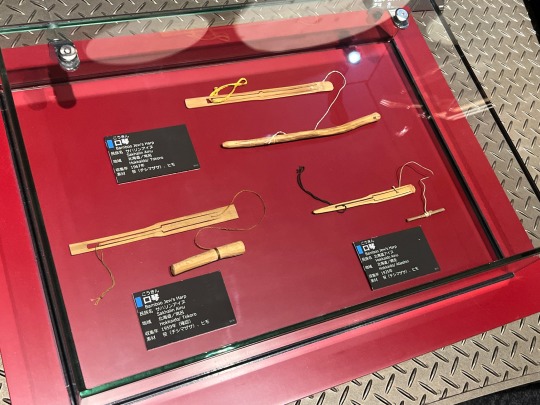
ロシア/サハ共和国 金属製口琴 中国/内モンゴル自治区/ハイラル区 エベンキ 金属製口琴 ロシア/ハバロフスク地方 ナーナイ 金属製口琴
北海道/常呂 サハリンアイヌ 竹製口琴 北海道/網走 北海道アイヌ 竹製口琴
口琴はムックリともいうと後に知った。北方民族博物館の売店でムックリが1000円で売られていたが、その時はムックリが口琴だとわからず、子供用のおもちゃか何かだと思って気になったものの買わなかった。その後、Amazonや楽天などでも口琴が���く売られていると知ったが、せっかくなら北海道の現地で買いたかった。
5 notes
·
View notes
Photo
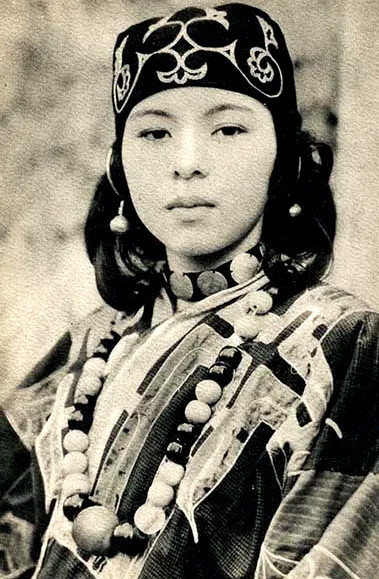
[Photo above: an Ainu woman in 1920s]
Legends and myths about trees
Forest spirits and natives (4)
Korpokkur (or Korbokkur) – ‘People under the butterbur leaves’
Korpokkur are the tribes of dwarfs in folklore of the Ainu people of the northern Japanese islands, meaning 'people under the butterbur leaves'.
The Ainu believe that the korpokkur were the people who lived in the Ainu's land before the Ainu themselves lived there. They were short of stature, agile, and skilled at fishing. They lived in pits with roofs made from butterbur leaves.
Long ago, the korpokkur were on good terms with the Ainu, and would send them deer, fish, and other game and exchange goods with them. The little people hated to be seen, however, so they would stealthily make their deliveries under the cover of night.
One day, a young Ainu man decided he wanted to see a korpokkur for himself, so he waited in ambush by the window where their gifts were usually left. When a korpokkur came to place something there, the young man grabbed it by the hand and dragged it inside. It turned out to be a beautiful korpokkur woman with a tattoo on the back of her hand (the tattooing of Ainu women is said to be based on this). She was so enraged at the young man's rudeness that her people have not been seen since. Their pits, pottery, and stone implements, the Ainu believe, still remain scattered about the landscape.
[History of Ainu]
The Ainu are an indigenous people from Sakhalin in the north to the Kuril Islands and Kamchatka Peninsula in the north-east and around the northern Japanese archipelago, especially in Hokkaido. The Ainu have long had an economic zone around the Sea of Okhotsk region.
They worshipped bears and wolves, as well as gods embodied in the elements of nature, such as water, fire and wind.
Ainu is the Ainu language for 'human' and is believed to have originally meant 'human' as a concept as opposed to 'kamui' (a designation referring to nature based on the spirit that everything in nature has a heart).
The Ainu people were conquered and their land confiscated by neighbouring Japan and Russia between the 15th and 18th centuries. Later, in the 19th century, forced them to convert, apply their customs and belong. During the Soviet era, hundreds of Ainu were executed or forcibly relocated. Today, the population and the Ainu language are in decline and there are revival efforts for their traditional culture.
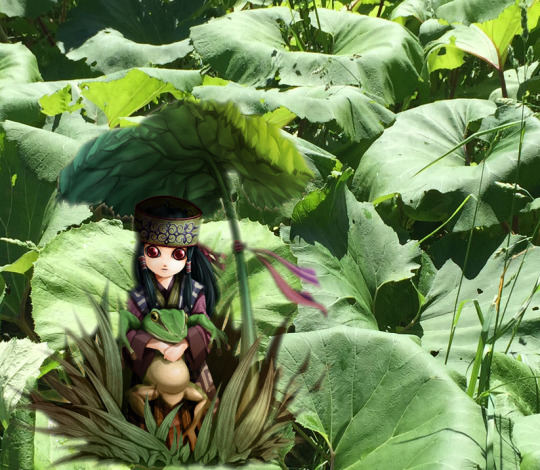
木にまつわる伝説・神話
森の精霊たちと原住民 (4)
コロポックル (又はコロボックル) 〜「蕗の葉の下の人々」
コロボックルは、アイヌ語で「蕗の葉の下の人」という意味を持つ、アイヌに伝わる小人族のこと。
アイヌがこの土地に住み始める前から、この土地にはコロボックルという種族が住んでいた。彼らは背丈が低く、動きがすばやく、漁に巧みであった。又屋根をフキの葉で葺いた竪穴にすんでいた。
昔、コロボックルはアイヌと仲が良く、鹿や魚などの獲物を送ってもらったり、品物を交換したりしていた。しかし、小人たちは人目につくのを嫌い、夜陰に紛れてこっそりと配達していた。
ある日、アイヌの青年がコロボックルを一目見たいと思い、いつも贈り物を差し入れる窓際で待ち伏せしていた。そのコロボックルがそこに何かを置こうとすると、青年はそれを手で掴んで屋内に引きずり込んだ。すると、それは美しい女性のなりをしておりその手の甲には刺青があったという (なおアイヌの婦人のする刺青はこれにならったものであるといわれている)。コロボックルは青年の無礼に激怒し、一族を挙げて北の海の彼方へと去ってしまった。以降、アイヌの人々はコロボックルの姿を見ることはなくなったという。現在でも土地のあちこちに残る竪穴や地面を掘ると出てくる石器や土器は、彼らがかつてこの土地にいた名残である。
[アイヌの歴史]
アイヌ民族は、北は樺太から北東の千島列島・カムチャツカ(勘察加)半島、日本列島北部周辺、とりわけ北海道の先住民族である。アイヌ民族は永くオホーツク海地域一帯に経済圏を有していた。彼らは、熊やオオカミ、さらに水、火、風といった自然の要素に具現化された神を崇拝していた。
アイヌとはアイヌ語で「人間」を意味する言葉で、もともとは「カムイ」(自然界の全てのものに心があるという精神に基づいて自然を指す呼称) に対する概念としての「人間」という意味であったとされている。
アイヌ民族は、15世紀から18世紀にかけて、近隣国の日本とロシアに征服され、土地を没収された。その後、19世紀には改宗、慣習の適用、帰属を余儀なくされた。ソ連時代には数百人のアイヌが処刑されたり、強制移住させられた。現在、人口やアイヌ語は減少しつつあり、伝統文化の復興に向けた取り組みが行われている。
#trees#tree legend#tree myth#forest spirit#nature worship#ainu#drawf#koropokkur#hokkaido#sea of okhotsk#kamchatka peninsula#folklore#legend#mythology#nature#art
307 notes
·
View notes
Text
そもそも、アイヌ新法とそれによる事業そのものが、あの国と関係が深いサヨクリベラルの公金チューチュースキームだってことは、みんな気づいてることで
とっとと理事長解任の訴訟なりおこして決着つけなければ、公金の受け皿として事業を行う資格なしということにせい
どう見てもあの国の顔の方々がアイヌの衣装きてアイヌ民族は先住民族だ~ってやってるコスプレは、あの国の人らが日本がなんでもかんでも悪いんや~って泣き叫んで生きているキジを食い殺すのと同じにしか見えんのだが
12 notes
·
View notes
Text
札幌アイヌ協会激震「公費私物化疑惑」を現職理事が集団告発|NEWSポストセブン https://www.news-postseven.com/archives/20200831_1591078.html
#NEWSポストセブン
37 notes
·
View notes
Text

最近、家で作業することがあると言ってますが、何をしているのかというと、こんなこと。趣味と実益を兼ねた機織りの実験。アイヌ文化に伝わるアットゥシの技術を参考にしています。まあ、形だけ真似ようとした粗悪品な��ですが。
でも、いろいろと気づきがありました。次に活かせる…
#機織り

17 notes
·
View notes
Text
はじまるよ、はじまるよ、はじまるよったらはじまるよ。後半戦すたーと!なんのこっちゃ?という方、お時間あればひとつ前の投稿をぜひ。
7月

7月のビッグニュースはこちら。新たな屋号で初めてのアルバムを発売しまして、これまた豪華なアーティストの方々に楽曲をたくさん提供いただいたのよね。前にもここで呟いたと思うんやけど、僕は「鍵」と「HAPPY」がお気に入り!サブスクでも絶賛配信中でございます。胸張って言えるけど、名盤です。

FENDER FLAGSHIP TOKYO原宿店で、僕が愛用しているストラトギターを展示していただきましてん。僕のギターといえばこれ!って思い浮かべるファンの子も多いんちゃうかなあ。みなさまに間近で見ていただく機会に恵まれて嬉しかった。ちょうど7月は指の手術もあってしばらく活動もお休みしていたものやから、きっとファンの子にも大喜びしてもらえたはず。いや、間違いなくそうでしょう。ご心配おかけしました、たくさん甘やかしてくれてありがとう。

安田、復活!思い返せば休止も復活も全部まとめてこの月やったね。インスタライブでみんなと一緒にご報告したんやけど、自然薯やってしばらくいじられてた気がする。笑い過ぎて僕泣いてもうた。どんなことがあっても湿っぽくならず、大爆笑で終われるなんて本当に幸せ。とても個人的なことやけど、すごく大切な出来事やったからここにも書き残しておこうかな。仲間って最高。
8月
youtube
夏には明確に終わりがあって、寂しくなれるから夏なんだ。って誰かが言っていた気がする。この曲は燃えるような夏の熱さも、去り際の儚さも感じられる素晴らしい楽曲なのではないかなあ。僕たちの愛するスカパラさんとコラボレーションですよ、たまらんでしょ。めちゃくちゃかっこいいの。MVの見どころはね、踊るスカパラさんです。愛おしいったらありゃしない。

お待っとさんでした。SUPER EIGHTによる超アリーナツアーが愛知から開幕!約3ヶ月の期間で全国6ヶ所にお邪魔しましたよ。前半は僕の指のこともあってギターでの演奏は厳しかったんやけど、それでもあたたかく迎え入れてくれてほんまに感謝でいっぱい。ありがとうね。普段は見られないようなメインボーカル安田章大を味わってもらえたなら幸せです。ちょっと語ってもいい?ここまで長く一緒にいると、周年を迎えたときにおめでたい気持ちの反面、どこかで不安にさせることもあるだろうと思っていて。一区切りの予感といいますか。キリのいい数字には祝福と旅立ちがつきものやから。ファンの子全員とまではいかんくても、きっと終わりというものを考えてしまう子もおったと思う���。でもね、僕たちはみんなの前に立ってひとりひとりと優しい約束がしたかったんですよ。まだまだ終わらないって、ただそれだけ。毎公演叫ぶように届けたと思う、嘘は言わないから信じてて。
9月

ロッキンひたちなかにSUPER EIGHT参戦!昨年に引き続き2度目です、ありがたい。僕たちのステージもうれしいことに大熱狂で最高の気分やったんやけど、ロッキンでもスカパラさんとコラボさせていただいたり、僕の中で幸せな思い出がまたひとつ増えた1日でございやした。お写真はね、めざましテレビのスタッフさんに作っていただいたかわいいめざましくんでっせ。∞マークの位置がそれぞれ違っていたり、めっちゃ凝ってるの。これには横山くんも超にっこり。すーぱーしょうた、名前に恥じない男で居たいもんやな!それとおーくらにね、ミニオンのフード付きタオル譲ってもらったんよ。ロッキン限定のやつ。僕がミニオン好きやからって!うれしなあ。

日本で一番あかるいお祭り、カミガタボーイズによるドリアイ!小学生のかわいい関西ジュニアたちから上は43歳まで、100名を超える関西勢がみなさまを愛でおもてなし。どうやった?僕は楽しい以外の感想が見つからなくて困ってる。しかもサプライズで我々の20周年をお祝いしていただいたのよ、愛に溺れそうやった。感動。メンバーカラーの綺麗なお花を片手に大好きな後輩たちに囲まれて、お客さんからもお祝いしていただけて、みんなで記念写真も撮って。これはなんて人生のご褒美?笑顔と幸せを与えるつもりが逆に抱えきれへんくらいにもらってもうた。ありがとう。関西勢、最高です。それからまる。我慢できてへん!
10月

10月は個人のお仕事からひとつ。前にもここに書いたんやけど、北海道でロケをしてまして。なんでかって言うとね、アリーナツアーで披露する「オモイダマ」という曲に吹奏楽部のご協力が必要やったんです。それぞれが担当する地方まで出向いてお願いしていたんやけど、僕は北海道の高校生の元へ。と、その前に広大な北の大地を満喫!ファンの子のための聖地作り、たのしかったなあ。お友達のみんなも、北海道へ足を運んだときには是非同じところで写真撮ってね。ちなみにおすすめの観光スポットはAOAO SAPPOROさん。水族館です。ここのアイコンがまさにそうやねん、ペンギン見つめてるの。かわいい海の生物がいっぱいおって、癒されること間違いなし。
11月

年内最後のフェス、スカパラ甲子園。呼んでいただきました。うれしい!この大人の渋さ、かっこよさ。どうしたって撃ち抜かれてしまうなあ。今までは尊敬する先輩方の背中を見て、盗めるものは盗みながら全力で走ってきたけれど、僕たちもあれよあれよという間に事務所ではきっともうベテランの位置。後輩たちに追いかけられ、追い越され、そんな日々も楽しくて仕方がないけど、スカパラさんはそんな僕たちのずっとずっと前をひた走る新たな憧れの存在です。一緒に音楽ができること、半端なく刺激になっているのを感じる。また同じステージに立てますように。
12月

誰が洋服落書きされた壁やねん。大切な衣装です。そしてこれも大切なお仕事!安田、再び北海道へ出向いてアイヌの方々にお会いしてきました。狩猟、音楽、食などの伝統文化を通じて、次世代へ言葉を紡ぐドキュメンタリー番組です。放送は大晦日と来月の全2回なんやけど、CSの特殊チャンネルというのもあってお友達に触れていただくのはなかなか難しいのかな。僕���こういうドキュメンタリー番組が向いてるかもしれへん。バラエティも好きやけどひとりで前に前に���てしゃべるのはちょっと下手っぴやから。たくさんの方に届けられるようにもっと頑張るね。

2024年の締めくくりは待ちに待ったドームツアー!福岡ドームから幕開け。アリーナツアーを駆け抜けてから1ヶ月くらいしか経ってないんやけど、また全然違う構成とセットリストで創り上げました。絶対に楽しんでいただけると思う。きっとファンの子の中でも、この時のライブが一番好きやったっていうお気に入りの公演が必ずあるやろうけど、みんなそれを塗り替える気で居るからね。どこから見てもどの曲を聴いても楽しくて、胸がぎゅーってなるようなeighterのためのライブ。20年分の愛をお返しします。それはそうと見てよ、ぬいぐるみ。かわいいやんなあ。でもね、いつも僕のぬいだけ髪型追いついてないねんな。スタッフさんいつもどんな気持ちなんやろ?出来上がった!と思ったら僕だけもう変わってんねん。わざとちゃうの。ごめんなさい。さてさて、こんなところでしょうか。完全に自己満やし勝手に書いといてあれやけど、ここまで読んでくれた子ってほんまにおるんかな?長いことお付き合いいただいて心からありがとう。さては相当な物好き、安田マニアですね。疲れたやろうから、ゆっくり目と指を休めてくださいな。あなたにとってSUPER HAPPYな年末年始になりますように!来年も僕となかよしこよしのおしくらまんじゅうして遊びましょう。いつもほんまにありがとう。
6 notes
·
View notes
Text
旭川市アイヌ記念館(2024年9月7日)「カムイのうた」上映におけるサラシからの情報
Information from the leaflet about the showing of 'The songs of Kamuy' at the Asahikawa Ainu Museum (September 7, 2024)
Movie background
The movie takes place in Higashikawa town (in Kamikawa district, Hokkaidou) in 1917.
The story is about a 19 year old Kitasato Teru (北里テル) who passes away young, in Toukyou, as she translated oral traditions from Ainu into Japanese. If this seems familiar to you, it is because the movie is heavily inspired from the real life story of Chiri Yukie.
The movie came out in 2023, and it promoted the natural scenic beauty of the area around the Daisetsuzan National Park, as well to promote the importance of passing down and transferring information on the Ainu culture and history.
The movie's aim was to decrease the discrimination of Ainu. To achieve this, they cooperated with ALL HOKKAIDO to make this film.
The movie premiered in November 2023 inside Hokkaidou before being screened to the rest of Japan in January 2024.
Who is Chiri Yukie?
Chiri Yukie (1903-1922) is the first translator of many of the Ainu oral traditions, comprised in the book 'Ainu Shinyoushu'. Usually, these oral traditions would never be written down.
She finished her work when she was 19. As she was Ainu, she had to fight against the discrimination, oppression, and harassment from much of the Wajin.
Her endeavour lead to the preservation of the culture for generations to come. Her passion and spirit in her book had and has left a deep impression to many kinds of people.
What is the plot of the movie?
Teru (テル), an excelling student who wishes to extend her studies, fails her exams just because she is Ainu.
After this, 1917 comes, and she becomes the first Ainu to become enrolled in an all girls vocational school. But in this school, bullying and discrimination continued; even being called Dojin (土人); a slur commonly used to discriminate and abuse the Ainu population.
One day a leading researcher in the Ainu language, who travelled all the way from Toukyou to meet Teru's aunt, Inuyematsu (イヌイェマツ), came to visit. He came to listen to Yukar, Ainu epics. He listened intently, and said, "Please take pride in being Ainu. You are one and only, a unique kind in the world." 「アイヌ民族であることを誇りに思ってください。あなた方は世界に類をみない唯一無二の民族だ。」
Moved by his words, Teru soon begins her goals to preserve Yukar in writing.
As the result of her hard work proves to be amazing in quality, the professor offers her to continue her translations in Toukyou. After a while, she accepts this offer, and leaves, seen off by her aunt and a young Ainu man called Hisashi (一三四). At this time she did not know that she would never set a foot on Hokkaidou again...
Main cast
吉田 美月喜 (北里テル)
望月 歩 (アイヌの青年、一三四)
島田 歌穂 (テルの叔母、イヌイェマツ)
加藤 雅也 (アイヌ語研究学者、兼田教授)
阿部 進之介 (一三四の祖父、レモㇰ)
Staffs
Directed by Hiroshi Sugawara
Screenplay by Hiroshi Sugawara
Produced by Cinevoice
Special help from 写真文化首都 北海道 「写真の町」 東川町 (Photo Culture Capital of Hokkaido "Town of photography" Higashikawa town)、旭川アイヌ協議会 (Asahikawa Ainu Council)
Ainu language and culture supervisor: 加藤久和
The movie's take-away message
To recognise that Ainu are indigenous to Japan, and have their individual language, religion, and culture
Chiri Yukie had risked her life to preserve the Oral epics of Ainu, which was never written before
The natural beauty of the Daisetsuzan region, as the movie is modelled after Chiri Yukie's life
We should aim to educate ourselves on the Ainu cultures that were once lawfully suppressed, and to work towards a world without discrimination
To convey the wide diversity of norms and values within Ainu cultures, and the beautiful natural environment as well as the harsh social environment they lived in
To raise awareness of the current bullying and discrimination that still exists today, and to teach and encourage the future generations to build a more equal world and value coexistence
Gratitude to everybody who had helped in the making of this project
Final
Once again, the movie is called 「カムイのうた」。This movie is categorised as fiction, although it is historically and culturally accurate, and the story of Kitasato Teru is very closely inspired by the life and achievements of Chiri Yukie.
We are approaching a world where there is increasingly more, well researched media about the Ainu. Let's support these projects so this pattern continues on strongly.
These information was written down under the translation of this account.
5 notes
·
View notes
Text
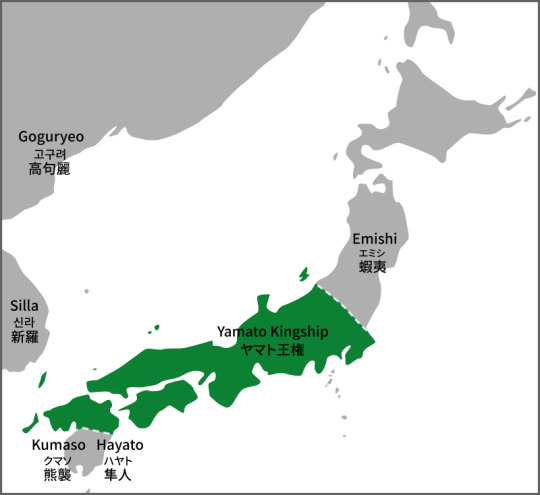
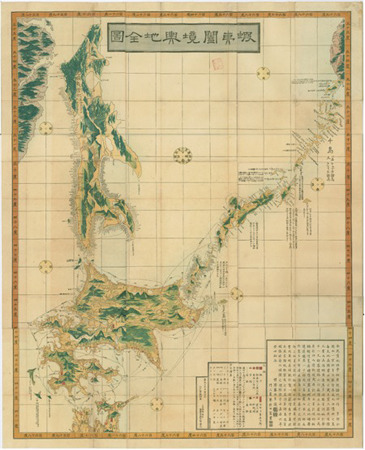
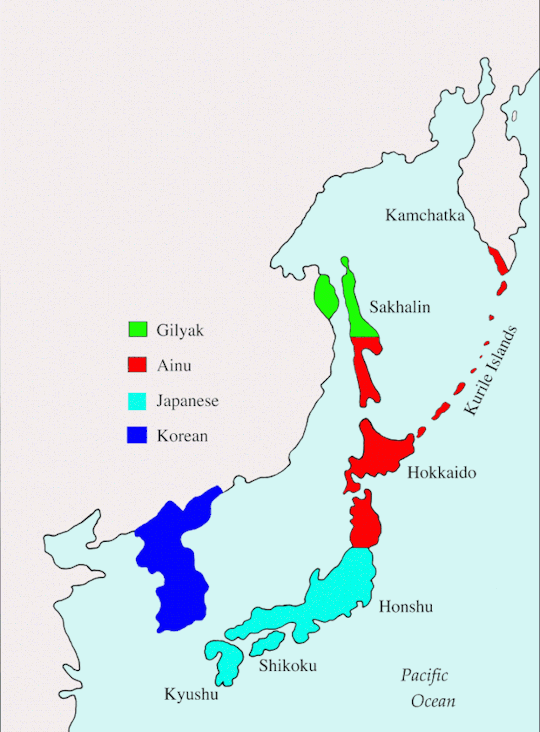


Capítulo 1: Introducción a los Emishi. Sean bienvenidos amantes del mundo japonés a una nueva publicación, en esta ocasión vamos a hablar sobre los emishi dicho esto pónganse cómodos que empezamos. - Para empezar, el término emishi hace referencia a todas las tribus y pueblos que vivían y que todavía viven al norte de Japón es decir la mitad norte de Tohoku, incluida hokkaido a este pueblo se le denominaba y se le denomina todavía a día de hoy Ainu, considerados los primeros pobladores del archipiélago a lo largo del siglo XVI hubo una serie de campañas militares para controlar dicho territorio aunque ya en el siglo VII siglo VIII después de Cristo durante el apogeo del clan yamato crearon una serie de fortalezas al norte para mantenerlos a raya. De hecho eran denominados bárbaros del norte que además se revelarán en más de una ocasión bajo el dominio japonés sin resultado alguno, actualmente se les da un reconocimiento a esta cultura, que en el pasado no lo tuvieron, como por ejemplo hay un museo dedicado a ellos y a su cultura. - Espero que os haya gustado y nos vemos en próximas publicaciones que pasen una buena semana. - 第 1 章: 蝦夷の紹介。 日本世界を愛する皆さん、新しい出版物にようこそ。今回は蝦夷について話します。とはいえ、気を楽にして始めましょう。 - まず、蝦夷という用語は、日本の北、つまり北海道を含む東北の北半分に住んでいた、そして今も住んでいるすべての部族と民族を指し、この民族は現在もアイヌと呼ばれていると考えられています。 16 世紀を通じてこの列島に最初に定住した人々は、その領土を支配するために一連の軍事作戦を行ったが、すでに 7 世紀から 8 世紀にはヤマト氏の全盛期に、彼らは北に一連の要塞を築き、領土を維持していた。湾。実際、彼らは北の野蛮人と呼ばれていましたが、日本の統治下でも何の成果も得られずに何度も姿を現しましたが、現在では、この文化は、例えば、そこでは過去にはなかった認識を与えられています。は彼ら��その文化に特化した博物館です。 - 気に入っていただければ幸いです。今後の投稿でお会いしましょう。良い一週間をお過ごしください。 - Chapter 1: Introduction to the Emishi. Welcome lovers of the Japanese world to a new publication, this time we are going to talk about the emishi, that being said, make yourself comfortable and let's get started. - To begin with, the term Emishi refers to all the tribes and peoples who lived and still live in the north of Japan, that is, the northern half of Tohoku, including Hokkaido. This people was called and is still called Ainu today. , considered the first settlers of the archipelago throughout the 16th century there were a series of military campaigns to control said territory although already in the 7th century 8th century AD during the heyday of the Yamato clan they created a series of fortresses to the north to keep them at bay. stripe. In fact, they were called barbarians of the north who also revealed themselves on more than one occasion under Japanese rule without any result. Currently, this culture is given recognition, which in the past they did not have, such as, for example, there is a museum dedicated to them and their culture. - I hope you liked it and see you in future posts, have a good week.
#japan#culture#history#archaeology#photography#Ainu#Hokkaido#Emishi#heianperiod#NaraPeriod#unesco#anime#日本#文化#歴史#考古学#写真#アイヌ#北海道#蝦夷#平安時代#奈良時代#ユネスコ#アニメ#maps#地図#地理#geography#Tohoku#東北
59 notes
·
View notes
Photo

#アイヌ #アイヌ紋様 #アイヌ刺繍 #アイヌ木彫 #アイヌ文化 が好きで憧れています。 なので、昨年の秋には1人で阿寒湖に泊まりました。 白老にも行きたいと思っています。 なんと #静岡市 にある #芹沢銈介美術館 でアイヌ文化の講習会があったので電話予約して行って来ました🚗 なかなか聴けない貴重なお話しばかりで、とても興味深かったです。 二風谷にも行きたくなったし、 ゴールデンカムイの続きを読みたくなりました。 二風谷で撮影中の映画も楽しみです♪ たまたま友人も興味があるということで4人で、ついでに楽しく大人の遠足✨ #芹沢銈介美術館 は、また改めてゆっくり訪れたいです♪ ほぼ毎週1年ほど通っていた静大 と静岡駅周辺と「グランシップ」くらいしか訪れた事がなかったので、 行ってみたかった #日本平ホテル も行けて嬉しかったです♪ #静岡県 #静岡県民 #伊豆半島民 我が家から🚗で2時間前後 (静岡県 静岡市) https://www.instagram.com/p/CpTeNDKyCDL/?igshid=NGJjMDIxMWI=
0 notes
Text
熊送り儀礼に使われる打楽器 北方民族博物館の館内映像(撮影可)
ウリチ/アムール川下流域 Ul'chi/Lower Amur

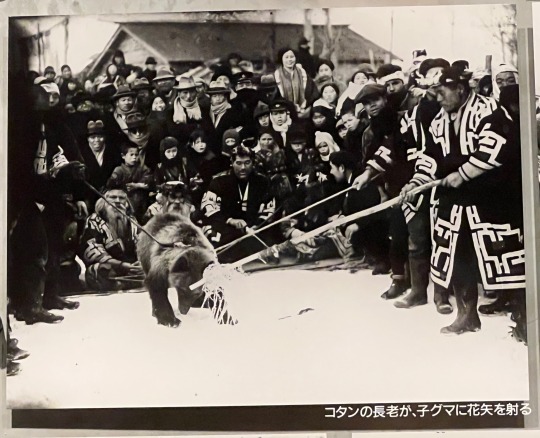
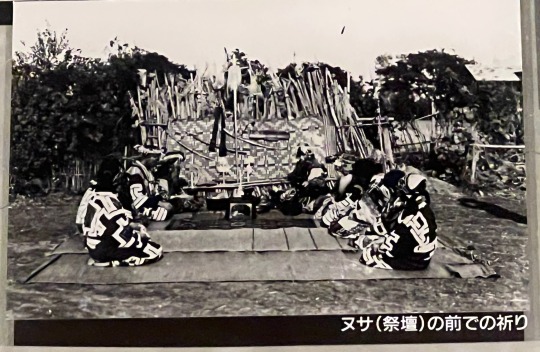


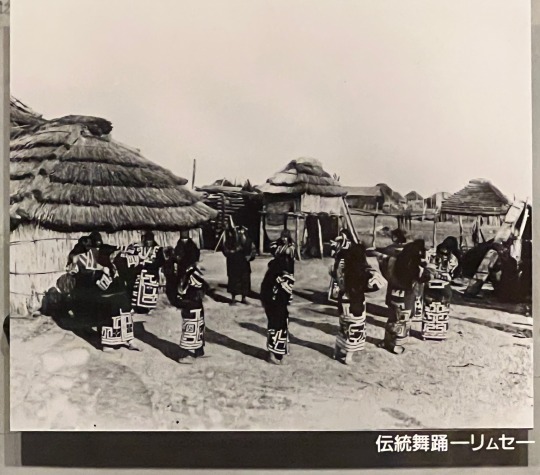
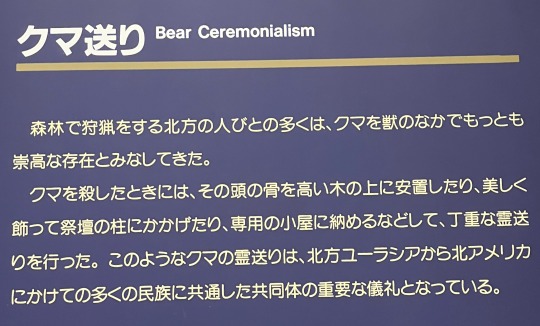
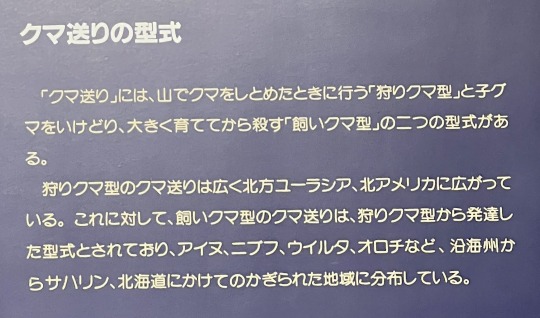
熊送り 熊を獣のなかで特別な存在とみなし、これを殺害するときに執行される儀礼の総称。この儀礼は、北方ユーラシア大陸を中心に、北アメリカ、ベトナム山地、バスク地方など、熊の生息する地域のほとんどの民族にみられ、俗に熊祭といわれることもあり、アイヌではイオマンテという。つまり、熊のすむ地帯では、他の獣を超えた力をもっていることから、熊は獣の王、野獣世界の支配者とみなされる。また、人間が森の中で遭遇するもっとも危険な存在であることなどから、森の主にも位置づけられる。この森と人間の村とが一つの宇宙を形成しており、儀礼の対象となる熊は、森の野獣世界から人間社会を訪問し、そこで手厚い歓待を受け、丁重な儀礼をもって殺害される。これによって初めて毛皮や肉などの仮装を脱ぐことができ、そして神のいる森へふたたび帰るために不可欠な霊的存在になることができるとされる。 熊送り(熊祭)|日本大百科全書・世界大百科事典|ジャパンナレッジ
この映像を見た時、何とも言えない恐怖と畏怖と神聖さを感じた。私は無宗教なのに何か軽々しく立ち入ってはいけない領域のような気がした。以前は「生贄」というと残酷な風習のように感じていたが、熊送りの映像を見た時「生贄は必ずしも残酷とは言えないのでないか」と感じた。もちろん犠牲になる熊にとっては残酷な行為だけれども。恐らく昔の人は熊を殺す時に命の重みを感じて儀式に臨んだのでないか。現代では考えられないような不条理な習慣もあっただろう。とてつもなく恐ろしいのだが、何か強烈に惹きつけられる魅力も感じた。
熊送りには熊を狩った時に行う儀式と、飼いならした子熊が大きくなって殺す時に行う儀式があるという。後者は特に残酷さが際立っている。写真を見るとまだ子供の熊も対象になっている。現代なら動物愛護団体の抗議の対象になりそうだが、私達だってまだ子供の生き物を食べ物として取り入れていることはあるし、残酷さには変わりないのだ。むしろ残酷さから目を背けない所に学ぶべき所もあるかもしれないと感じた。
仔グマ飼育型クマ送りはいつから 広く北部ユーラシアから北アメリカに至る北方地域における北方諸族の問では、山猟でクマをしとめた場合にその場で解体し、頭骨をはじめとする骨をその場で天の世界に送り返す儀礼を行っている。これは「オプニレ型」と呼ばれる動物儀礼である。これに対して「オマンテ型」とされる儀礼は「仔グマ飼育型クマ送り」を指し、きわめて特殊なもので厳格な規律の中で行われる最高のスタイルの儀礼とされる。
母グマは冬ごもり中に仔グマを出産する。アイヌの人たちは、春先にその母グマを殺し、山でその送りを行い、仔グマを集落に連れ帰るのである。北海道の場合はその仔グマが二歳になった冬に—樺太(サハリン)の場合は三歳まで育てることがあるというが—、それを殺して送りを行うのである。それが「仔グマ飼育型クマ送り」であり、一般的にいうイオマンテ(イヨマンテ)である。 オホーツク「クマ祀り」の世界 - OKHOTSK
0 notes
Text
スティグマ(一般と異なるとされ、差別や偏見の対象として使われる属性や特徴)って、人間はお互いに他の集団に対して抱いてしまうんですよね。なかでもマジョリティが持ってるスティグマは、社会の基本的な価値になってしまう。障がい者や外国人やLGBTQ+は怖い、とか。 そうするとその社会の中で暮らしてる当事者にもそれが内面化されてしまって、自分は恥ずかしい存在なんだとか、自分は駄目なんだと自己肯定感がどんどん下がっていき、社会に出る気力が削がれてしまう。本当は社会に出て他の人と接触をすることで偏見は解消されていくはずなんですが、その機会も失われて、さらに偏見が強まって固定化してしまう。
(中略)
当たり前なんですけど、いろんな人がいると認識すること。相手に変な期待を持つことは、自分が好意だと思っていても、相手にとっては不本意だったりする。そのことはマナーとして知っておくべきだと思います。
5 notes
·
View notes
Text
My take on translating the song 森のくまさん in the Ainu language
(From The Foundation of Ainu Culture, Chitose Beginner Ainu Book, アイヌ語訳:平成22年度��オル事業・アイヌ文化伝承者育成事業 講師・受講者の皆さん)
シネアントタ ニタイ トゥムタ キムンカムイ クヌカラ sine an to ta nitay tum ta kimunkamuy ku=nukar One day I met a bear in the forest. ルサムタ ノンノ ヘチラシパ キムンカムイ クヌカ ラ ru sam ta nonno heciraspa kimunkamuy ku=nukar I met a bear on a road where the flowers bloomed nearby キムンカムイ エネイタキ ポンメノコ ホクレ キラ kimunkamuy ene itak hi pon menoko hokure kira The bear said, "O small girl, run away fast!" ネ コロカイ キムンカムイ エノシ ホユプ ワ エ ク ne korkay kimunkamuy en=os hoyupu wa ek However, the bear followed me. ポンメノコ エネチウカ ネプカイ エハチレ pon menoko en=eciwka nepkay e=hacire "Little girl, you dropped something you were holding!" レタラセイアネカラ ポンポン キサルンペ retar sey an=ekar pon pon kisarunpe "Tiny earrings made from white oak" キムンカムイ イヤイライケレ ウトゥラノ リムセアンノ kimunkamuy iyayraykere uturano rimse=an no "Thank you Bear, let's dance together"
This was fun to translate. I tried not to look at the Japanese translation too much and translated the text word-for-word. The lyrics differ a bit from the original Japanese lyrics of the song.

5 notes
·
View notes
